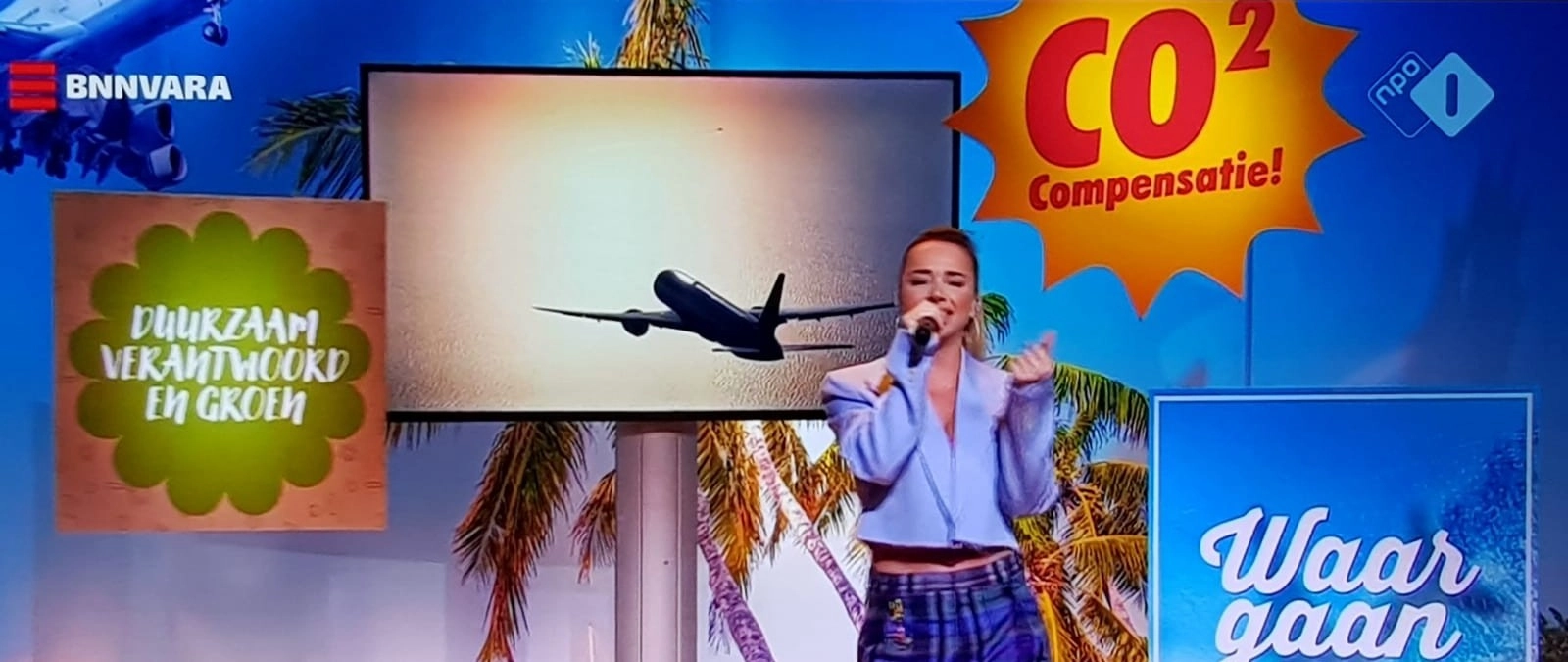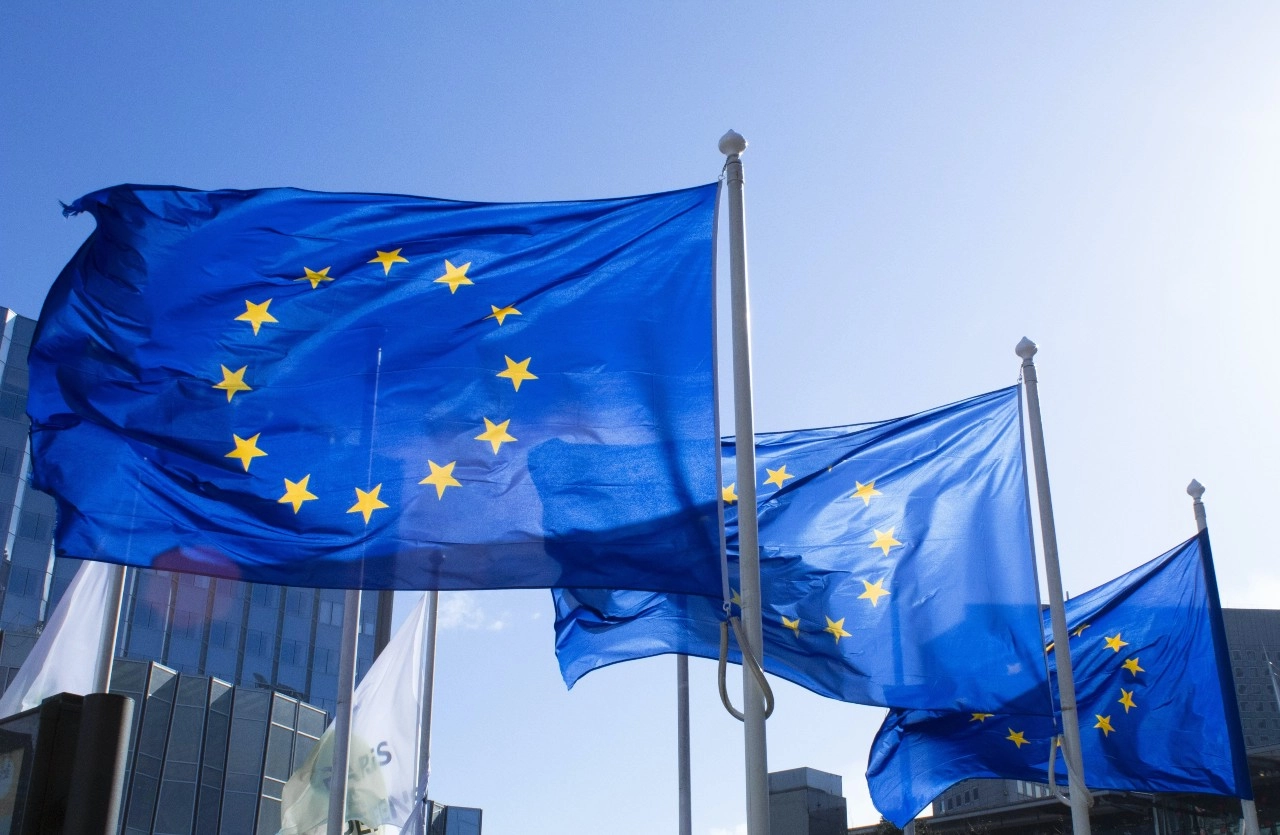De EU en de Rijksoverheid onderstrepen het belang van duurzaam en innovatiegericht inkopen en de eigen verantwoordelijkheid daarbij. Terecht, want het totale inkoopvolume van Nederlandse overheden bedroeg in 2019 € 85 miljard. Europees gezien is dat € 2 triljard, verdeeld over 250.000 overheden. Met 15% van de Nederlandse inkoop zijn de Nederlandse overheden verantwoordelijk voor 18% van de klimaatvoetafdruk, 9% van het landgebruik en 23% van het grondstoffengebruik.
Groot verbeterpotentieel
Veel Nederlandse overheden hebben dan ook stevige ambities om hun inkoop te verduurzamen, maar evaluaties laten zien dat er nog een groot verbeterpotentieel is. Zo liet een recente studie naar circulair inkopen van wegen en kantoormeubilair in 2017 en 2018 zien dat circulair inkopen bij deze twee productgroepen vaak wordt toegepast, maar nog niet zo effectief als mogelijk is. Mede daarom zijn de Europese aanbestedingsrichtlijnen in 2014 aangepast: maatschappelijke doelen zoals duurzaamheid en innovatie zijn toegevoegd aan de hoofddoelstelling, het borgen van eerlijke concurrentie. In Nederland zijn deze wijzigingen overgenomen in de Aanbestedingswet 2016. Verschillende bestaande procedures zoals de Concurrentiegerichte dialoog zijn aangepast met het oog op meer dialoog en samenwerking tussen opdrachtgever en opdrachtnemer. Ook is een geheel nieuwe procedure toegevoegd om innovatiesamenwerking tussen publieke en private partijen te stimuleren: het Innovatiepartnerschap.
Innovatiepartnerschap
Voorheen was een knelpunt dat een aanbestedende dienst wel een research- en development traject (R&D) in opdracht kon geven, maar het resultaat hiervan niet direct kon inkopen. Want voorafgaand aan de inkoop van het R&D-resultaat moest een nieuwe aanbestedingsronde worden georganiseerd. Met het effect dat bedrijven vrezen dat het R&D-resultaat in die tweede ronde door een concurrent opgepikt en gerealiseerd wordt. Wat doe je dan? Je houdt je kaarten op de borst en investeert niet meer dan nodig. Terwijl investeringen juist hard nodig zijn. Temeer omdat het vaak oplossingen voor maatschappelijke opgaven betreft die de markt niet spontaan zelf initieert.
Het Innovatiepartnerschap wil dit knelpunt oplossen: als de oplossing nog niet bestaat, mag een aanbestedende dienst een R&D-opdracht geven en het ontwikkelresultaat inkopen zonder tussentijds een nieuwe aanbesteding uit te schrijven. Om een lock-in te voorkomen en verschillende oplossingen tegelijkertijd uit te werken, kan de opdrachtgever starten met meer opdrachtnemers; gaandeweg kunnen er partijen afvallen. De verdere kenmerken zijn helder beschreven in het dossier over het Innovatiepartnerschap van PIANOo.
Afnamegarantie
De kracht van het Innovatiepartnerschap is dat de opdrachtnemer(s) en de opdrachtgever een intensieve R&D-samenwerking aangaan. Daarbij mag de opdrachtnemer ervan uitgaan dat zijn oplossing bij goed resultaat daadwerkelijk bij hem wordt ingekocht. Deze ‘afnamegarantie’ versterkt de motivatie van de opdrachtnemer om zijn innovatie in te brengen en hierin ook zelf te investeren. Om risico’s te spreiden en sneller te innoveren, kan de opdrachtgever werken met verschillende opdrachtnemers tegelijk en aansturen op kennisuitwisseling en synergie tussen hen onderling. De kracht van het Innovatiepartnerschap is het grootst als verschillende opdrachtgevers met een vergelijkbare innovatievraag deze bundelen. Dat stimuleert de snelheid van opschaling van het ontwikkelresultaat en dus de investeringsbereidheid van de opdrachtnemer(s). Een mooie oplossing dus. Dat beamen de pioniers die het Innovatiepartnerschap al hebben toegepast.
Hoogheemraadschap
Zoals het Hoogheemraadschap De Stichtse Rijnlanden (HDSR) dat het partnerschap inzet bij de versterking van de Lekdijk tussen Amerongen en Schoonhoven. Dit is een tracé van 55 km, verdeeld in zes stukken. Onder leiding van contractmanager Waldo Molendijk zijn drie opdrachtnemers geselecteerd die in één projectteam met HDSR samenwerken aan innovatieve en duurzame oplossingen voor de Lekdijk. De oplossingen zullen worden toegepast op de gehele Lekdijk en bij goed resultaat gaat elke opdrachtnemer de versterking van twee stukken realiseren.
Een belangrijk voordeel van het Innovatiepartnerschap is dat er niet gewerkt wordt in silo’s, met zes afzonderlijke projecten, projectleiders, opdrachtnemers, uitvoerders, oplossingen en materieelpools. In plaats daarvan werken de partijen vanaf het begin samen, gericht op kennisdeling en gebruikmaking van één pool emissieloos materieel voor de gehele Lekdijk. “Het Innovatiepartnerschap is een krachtig instrument om duurzame innovaties aan te jagen”, laat Molendijk weten. “Het is met name geschikt voor opgaven waarvoor nieuwe oplossingen nodig zijn en waar sprake is van een treintje van projecten. Dan kunnen de innovaties grootschalig worden toegepast en weten de innovatiepartners dat hun investeringen na een goede ontwik kelfase gaan renderen.”
Rijkswaterstaat
Erik Vendel, hoofd Innovatie en Markt bij Rijkswaterstaat (RWS) is ook positief over duurzaam innovatief aanbesteden. Met nieuwe methoden heeft RWS hier ervaring mee opgedaan, zoals de Buyer Groups, de Open Leeromgeving en het traject Small Business Innovation Research (SBIR) Circulaire Viaducten. De aanpak motiveert partijen om innovaties te realiseren waarbij RWS als opdrachtgever haalbaarheidsonderzoeken en prototypes betaalt. Ook loopt er een Innovatiepartnerschap gericht op emissieloze kustlijnzorg. Om deze sector C0 2 -neutraal te maken is, in plaats van baggeren met diesel schepen en -aggregaten, emissieloos materieel nodig. “Ons team wil de beste worden in het begeleiden en uitvoeren van SBIR en Innovatiepartnerschap”, aldus Vendel. “Daarbij willen we van eenmalige pilots naar dóórontwikkeling en opschaling van gevalideerde innovaties. Daar is haast mee.”
Rijksvastgoedbedrijf
Een andere pionier is het Rijksvastgoedbedrijf (RVB). Het RVB heeft startups uitgenodigd om manieren te bedenken om kantoorruimtes beter en daarmee duurzamer te benutten, zodanig dat het goed is voor individuele medewerkers en voor de organisatie als geheel. Innovatiemanager Martine de Vaan werkte bij deze opdracht nauw samen met collega-rijksdienstverleners. Het RVB is ingestapt in het overheidsbrede Startup in Residence (SiR) Intergov programma. Intergov stimuleert innovatiesamenwerking met bedrijven, waarbij het gaat om een groter aantal kleinere opdrachten.
Van belang is startups te motiveren om te investeren in nieuwe oplossingen voor overheidsopgaven. Daarom wordt telkens het Innovatiepartnerschap toegepast, zodat een succesvolle oplossing direct ingekocht kan worden. Maar is het Innovatiepartnerschap niet wat zwaar geschut om de doelen van het SiR-programma te bereiken? De intensieve innovatiesamenwerking tussen de overheid en jonge bedrijven omvat immers bescheiden startopdrachten van € 25.000. “Inderdaad vraagt een procedure als meervoudig onderhands aanbesteden minder administratie en eenvoudiger contracten”, beaamt De Vaan. “Maar het voordeel van een innovatiepartnerschap is datje na de eerste fase snel door kan met de samenwerking en kan opschalen. Dat is voor beide kanten interessant.”
De Vaan vindt het Innovatiepartnerschap een geschikt middel om duurzame innovatie aan te jagen mits je er structureel mee wilt werken, met een groep mensen die hier echt voor gaan. Want de eerste keer vraagt de aanpak echt leertijd. De organisatie moet nieuwe kennis opdoen, routines ontwikkelen en nieuwe contracten opstellen. “Maar als je als organisatie structureel wil inzetten op innovatiepartnerschap, dan ontwikkelen die routines zich wel. Ik denk dat het Innovatiepartnerschap dan juist tijd kan besparen. Je bent vrijer om samen te ontwikkelen en je kunt sneller kiezen voor een partner en dan samen doorgaan.”
Provincie Overijssel
Ook de provincie Overijssel pioniert met het Innovatiepartnerschap. Samen met regio partners zette de provincie een programma op om innovatieve oplossingen te zoeken voor de energietransitie. Janine Swaak, verantwoordelijk voor Inkopen met Impact bij de provincie, koos voor het Innovatiepartnerschap omdat het zowel aanzet tot intensieve samenwerking tussen opdrachtgever en opdrachtnemer als een duidelijke fasering mogelijk maakt. Swaak windt er geen doekjes om: “Je moet het Innovatiepartnerschap leren gebruiken en daarvoor is ‘gewoon doen’ een goede manier. Het venijn zit ‘m hier in de start. Selecteer die inkoopvraagstukken waarvan mensen zich echt eigenaar van voelen en waar impact op te behalen is.”
Gemeente Utrecht
De gemeente Utrecht merkt dat aanbestedingsvormen die nieuwe vormen van samenwerking mogelijk maken goed werken. “Je komt er sneller als je innovatief aanbesteedt en daarmee bedrijven stimuleert tot samenwerking, inbrengen van marktkennis en experimenteren”, aldus MVI-adviseur Marieke Hoffmann. “Wil je richting duurzame innovatieve oplossingen verder komen met MVI, dan is samenwerking tussen opdrachtgever en opdrachtnemer een voorwaarde”, stelt ze. “Ook structurele samenwerking tussen opdrachtnemers onderling is waardevol omdat je daarmee meer kennis en oplossingen aantrekt en verbindt.”
We hebben ook de mening gevraagd van Stephen van Aken, innovatiemanager bij de provincie Utrecht. Hij heeft nog niet gewerkt met het Innovatiepartnerschap, maar wil wel de kennis over nieuwe aanbestedingsvormen vergroten. “Zeker als we daarmee in ecosystemen met bedrijven, kennispartijen en inwoners innovatieve oplossingen kunnen ontwikkelen voor onze beleidsopgaven.”
Beperkingen
Volgens de pioniers is het Innovatiepartnerschap een krachtig instrument. Dat wordt bevestigd door een Europese studie die drie geslaagde Europese cases beschrijft (EC, 2021b). Maar het is geen silver bullet die je zomaar even toepast en die alle barrières wegneemt. De pioniers constateren twee beperkingen.
De eerste is dat het Innovatiepartnerschap een specifiek bereik heeft: het werkt met name goed als er een treintje opdrachten staat te wachten, zoals in het geval van HDSR met de zes stukken Lekdijk of de 200 km aan kademuren in Amsterdam. In dat geval kan het R&D-resultaat direct worden opgeschaald. Dit kan ook als verschillende opdrachtgevers hun vraag bundelen zoals de Overijsselse regiopartners deden bij het uitvragen van energie-innovaties.
Wat opvalt is dat het Innovatiepartnerschap wordt toegepast bij grote opdrachten zoals de Sterke Lekdijk, maar ook bij juist kleine opdrachten zoals in de SiR-programma’s. In beide gevallen streef je naar daadwerkelijk partnerschap tussen opdrachtgever en opdrachtnemer(s). Bij de grote projecten, met meer opdrachtnemers, is gedurende de looptijd opschaling voorzien. Bij de kleinere één-op-één projecten liggen opschaling en vraagbundeling vaker in het verschiet na het project.
Een tweede beperking zijn de tijd en de investering om een Innovatiepartnerschap voor te bereiden. Dit vraagt tijd, met name als een organisatie nog niet vertrouwd is met het instrument. Heeft men er wel ervaring mee, dan lijkt het tijdsbeslag op dat bij gebruikelijke aanbestedingen. Daarbij vindt vooraf ook marktconsultatie, dialoogfase en selectie van de opdrachtnemer plaats. Maar de investering is wel hoger indien je wilt werken met meer opdrachtnemers, want de opdrachtgever betaalt elke opdrachtnemer voor zijn inspanningen. Daar staat tegenover dat de kosten voor inkoop van het resultaat lager kunnen zijn, zeker als dit breder wordt toegepast. Bovendien innoveer je sneller, omdat je parallel verschillende ontwikkelingen aanjaagt. Daar komt bij datje – bij goed projectmanagement – kennisdeling en synergie bereikt tussen de verschillende opdrachtnemers en innovatiesporen.
Slim starten
Het is dus een aanrader het Innovatiepartnerschap te leren kennen en het in te zetten voor specifieke duurzaamheidsop gaven die vragen om nieuwe oplossingen. Waarbij het gaat om resultaten die niet eenmalig maar seriematig zullen worden toegepast, zo mogelijk bij verschillende opdrachtgevers.
Floris den Boer, Coördinerend adviseur Innovatiegericht inkopen bij PIANOo, geeft aan dat het Innovatiepartnerschap nog relatief weinig wordt toegepast. Bovendien gebeurt dit niet altijd met de reikwijdte waarvoor het eigenlijk bedoeld is: er moet een echte R&D-vraag liggen, de gevalideerde oplossing wordt werkelijk afgenomen en daarbij is sprake van substantiële schaalgrootte. Hij adviseert overheden het nationale missiegedreven innovatiebeleid te vertalen naar de eigen organisatie, naar de uitvoering van de eigen beleidsopgaven. En hier vol voor te gaan, met voldoende middelen, speelruimte, menskracht én vraagbundeling.
Volgens Maud Vastbinder van SKAO (C02-Prestatieladder) krijgt een instrument genoeg draagvlak als het duidelijk en breed inzetbaar is, en structureel wordt toegepast. Gezien het beperkte aantal toepassingen tot dusver is er nog een weg te gaan. Des te beter dat de pioniers hun collega’s uitnodigen een kijkje in de keuken te komen nemen en slim te starten met een pilot in de eigen organisatie. En tegelijkertijd op te trekken met andere aanbestedende diensten die vergelijkbare opgaven hebben, met het oog op vraagbundeling en opschaling. Dat gaat prima op regioniveau, omdat aanbestedende diensten, evenals ontwikkelaars van oplossingen, de regionale opgaven goed kennen en elkaar snel weten te vinden.
Bron: Milieu


